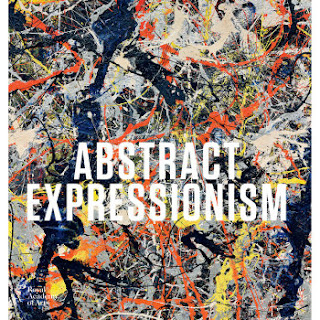Royal Academy celebrates abstract expressionism
The movement that first challenged and modernised our view of art was given centre-stage in a 250-year-old, prestigious institution, miles away from its conception.
Even glancing at the promotional posters while on the Tube, I could hear the gasps and recoils of purists and Philistines pooh-poohing abstract expressionism, exclaiming that it isn't art. It's an opinion which swept the art world when it first showcased in the 40s.
Back then, the world was a more conservative place. Women were imprisoned in marriage and confines of the home, gays were forced into a world secrecy and rationing was the norm. The hangover from prudish Victorians was still being felt, despite the world being plunged into the worst war in history. So when Jackson Pollock produced work that resembled a painter-and-decorators dust sheet, you can see why people didn't get it. Except people still don't get it, 70 years on.
The beauty of AbEx, as the RA innovatively called it, is that challenges our idea of art. Who said that art must be an exact depiction of a face, body or bowl of fruit. What does a still life teach you, except what the landscape looked like at that particular point in time?
Gorky, Pollock and Rothko dismissed all that and turned looking at art aesthetically into something visceral. It was something that evoked certain feelings, even if it was on a basic level of happy or sad. And it teaches us to look deeper than what you see at face value.
I've spent many an hour gazing at Spanish masters like Valazquez, Picasso and El Greco. All harrowing, enthralling and in their own way telling a very definite story. With AbEx, you need to really look at it to see what it's saying. And you can interpret it however you want, without an arty-type telling you you're wrong.
Looking red blocks of colour incites something within us. Looking at dense paint splatter, meticulously placed on an enormous canvas tells a story. Not a fairytale with a beginning, middle and happy ending, but a story of self.
I can't think of a better way to describe feelings than a mass of colour. Even with all modern science and technology, we can't fathom the metaphysical and with mental health issues on the rise, none of us - writer, doctor or musician alike can describe those feelings better than a Jackson Pollock.
One painting by Willem de Kooning was quite clearly showing Plato's Allegory of The Cave. You couldn't see it at first glance, but looking beneath the black splatters and behind the faint gray lines, you could make out the dark shadows on the wall. This being the perfect analogy for the whole movement.
Plato teaches us that we cannot just accept what we are shown, we must question it by looking past what's there. And that people who blindly accept what's there, even fighting to maintain the status quo live their lives in eternal darkness. This sums up AbEx, we shouldn't blindly accept that the Renaissance defines art and anything else is its poor relation - we need to challenge and change the norm in order to evolve and better understand ourselves and the world around us.

Comments
Post a Comment